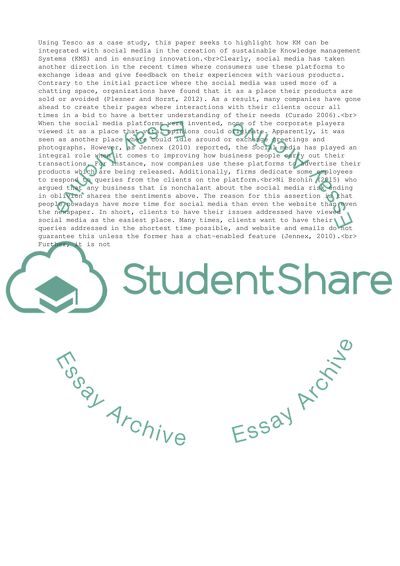Cite this document
(Knowledge Management, Social Networks and Innovation Essay Example | Topics and Well Written Essays - 2500 words, n.d.)
Knowledge Management, Social Networks and Innovation Essay Example | Topics and Well Written Essays - 2500 words. https://studentshare.org/management/1860211-knowledge-management-social-networks-and-innovation
Knowledge Management, Social Networks and Innovation Essay Example | Topics and Well Written Essays - 2500 words. https://studentshare.org/management/1860211-knowledge-management-social-networks-and-innovation
(Knowledge Management, Social Networks and Innovation Essay Example | Topics and Well Written Essays - 2500 Words)
Knowledge Management, Social Networks and Innovation Essay Example | Topics and Well Written Essays - 2500 Words. https://studentshare.org/management/1860211-knowledge-management-social-networks-and-innovation.
Knowledge Management, Social Networks and Innovation Essay Example | Topics and Well Written Essays - 2500 Words. https://studentshare.org/management/1860211-knowledge-management-social-networks-and-innovation.
“Knowledge Management, Social Networks and Innovation Essay Example | Topics and Well Written Essays - 2500 Words”. https://studentshare.org/management/1860211-knowledge-management-social-networks-and-innovation.


